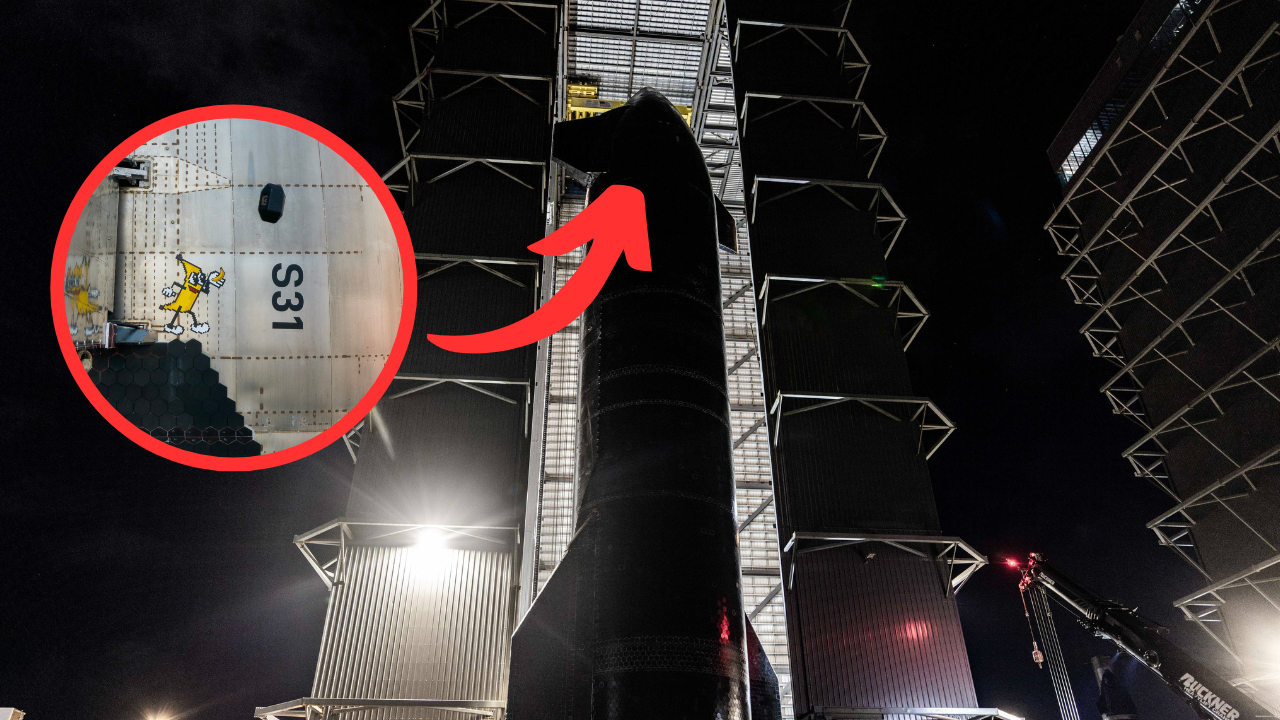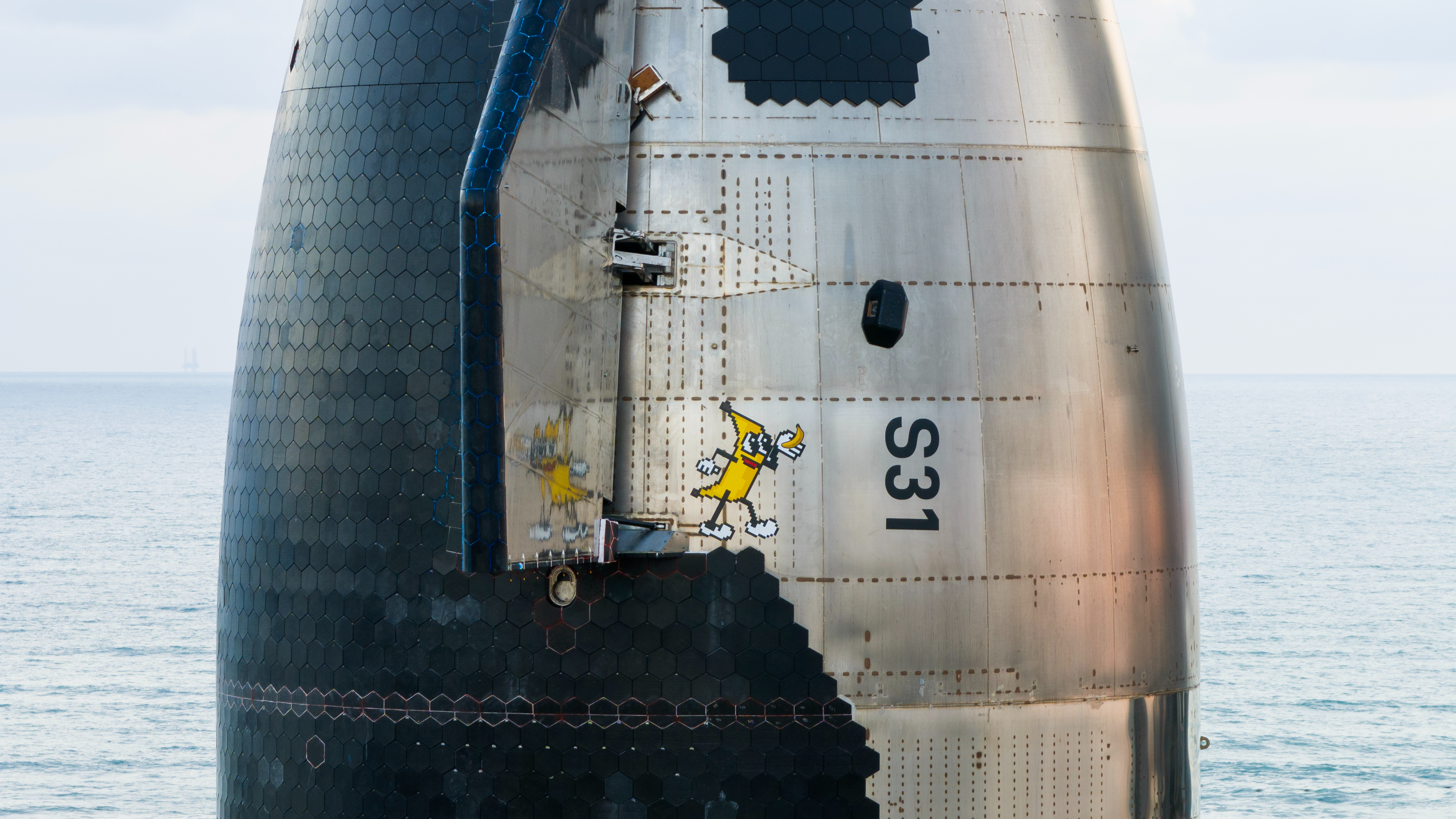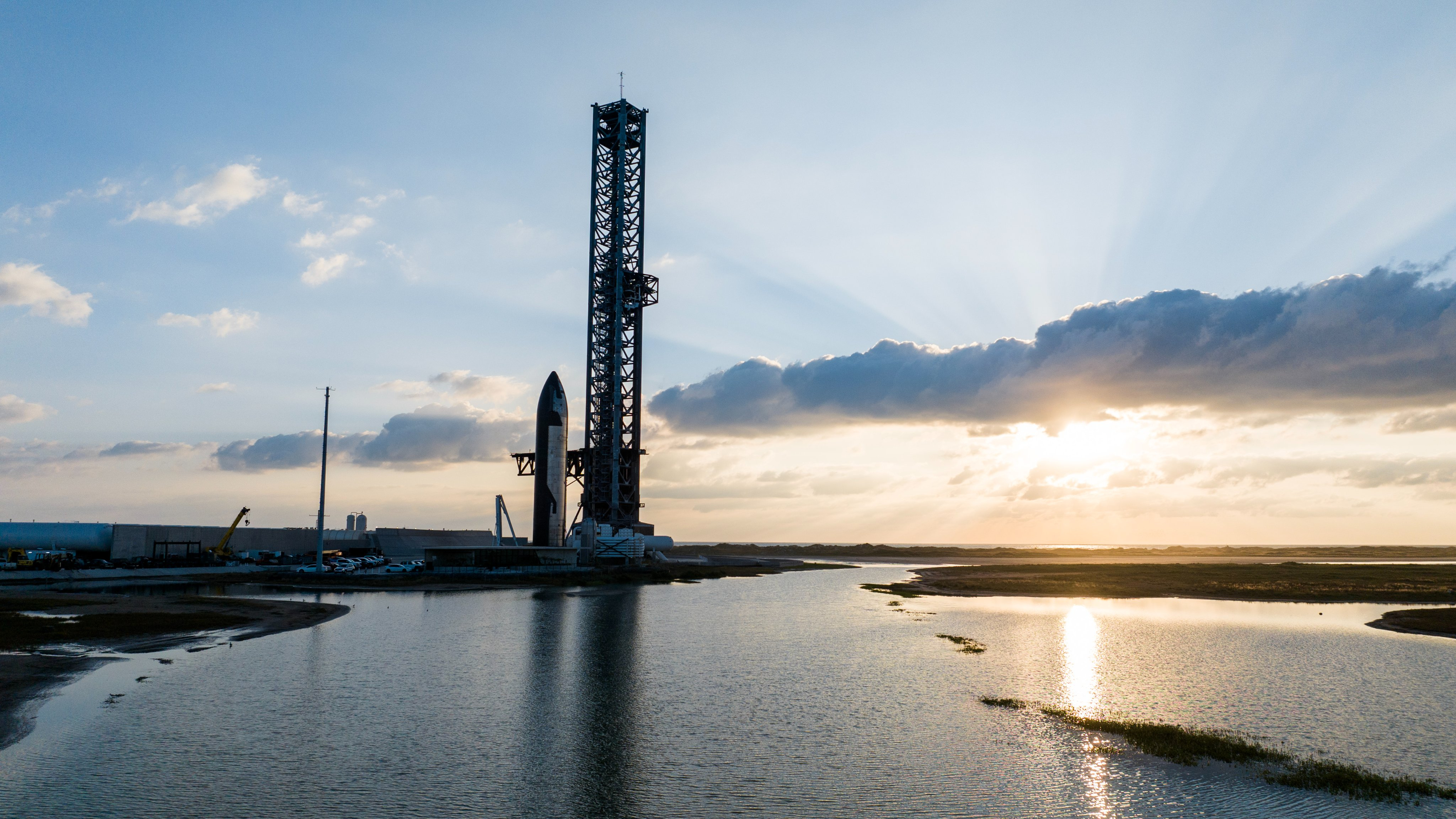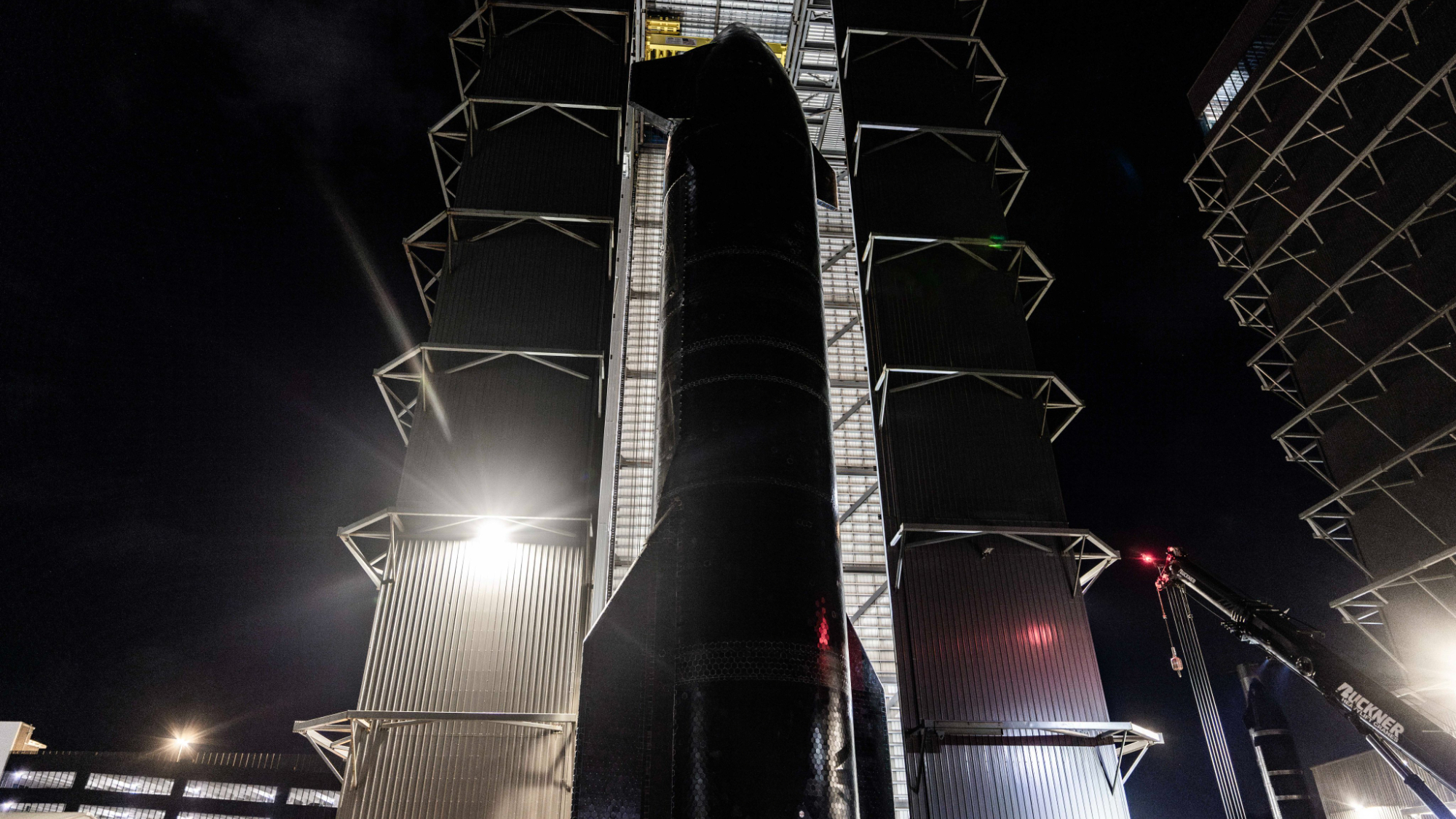
SpaceX is gearing up for the sixth test flight of its Starship megarocket, which is now less than a week away.
Elon Musk's company has rolled the sixth Starship vehicle's 165-foot-tall (50-meter-tall) upper stage out to the launch pad at its Starbase site in South Texas for testing ahead of the planned Nov. 19 liftoff.
SpaceX documented the milestone on X, posting three photos of the move on Tuesday (Nov. 12).

One of the photos is a closeup that focuses on some colorful artwork adorning the stainless-steel spacecraft — a pixelated, smiling cartoon banana holding a relatively realistic banana.
This is apparently a reference to the "banana for scale" joke that engineers and other aerospace professionals — including United Launch Alliance CEO Tory Bruno — like to make.
Related: Starship and Super Heavy explained

Starship is the biggest and most powerful rocket ever built. The vehicle consists of the upper stage — known as Starship, or just "Ship" — and a huge first-stage booster called Super Heavy. When these two elements are stacked, the rocket stands nearly 400 feet (122 m) tall.
Get the Space.com Newsletter
Breaking space news, the latest updates on rocket launches, skywatching events and more!

Both Starship stages are designed to be fully and rapidly reusable, a breakthrough SpaceX believes will usher in a new era of spaceflight and exploration.
Starship has flown five times to date — in April and November of 2023 and March, June and October of this year. During the most recent flight, which occurred on Oct. 13, SpaceX successfully landed Super Heavy back on the launch pad, catching the giant booster with the "chopstick" arms of Starbase's launch tower.
The company will try to repeat this feat on Flight 6. The upper stage, meanwhile, will splash down in the Indian Ocean, as it did on Flight 5.
Editor's note: This story was updated at 1:15 a.m. ET on Nov. 15 with the new target launch date of Nov. 19. The previous date was Nov. 18.
Join our Space Forums to keep talking space on the latest missions, night sky and more! And if you have a news tip, correction or comment, let us know at: community@space.com.

Michael Wall is a Senior Space Writer with Space.com and joined the team in 2010. He primarily covers exoplanets, spaceflight and military space, but has been known to dabble in the space art beat. His book about the search for alien life, "Out There," was published on Nov. 13, 2018. Before becoming a science writer, Michael worked as a herpetologist and wildlife biologist. He has a Ph.D. in evolutionary biology from the University of Sydney, Australia, a bachelor's degree from the University of Arizona, and a graduate certificate in science writing from the University of California, Santa Cruz. To find out what his latest project is, you can follow Michael on Twitter.
-
Philly Part 1 - Catch the SH booster. DONEReply
Part 2 - Catch the Starship. The key to everything.
Part 3 - Reuse the whole system.
The possibilities are endless as to what can happen after that. I really wish I was 25 years younger. Ah to be a tech nerd starting High School right now! -
MDH Reply
Right!Philly said:Part 1 - Catch the SH booster. DONE
Part 2 - Catch the Starship. The key to everything.
Part 3 - Reuse the whole system.
The possibilities are endless as to what can happen after that. I really wish I was 25 years younger. Ah to be a tech nerd starting High School right now!
When I was a kid, rockets either burned up on re-entry or landed in the ocean and sank. The concept of dry landing a rocket on it's tail was the stuff of science fiction. Now, SpaceX does it routinely, and every time I see it online I have to stop and watch. I don't think most people appreciate just how hard it is to do what they are doing.









